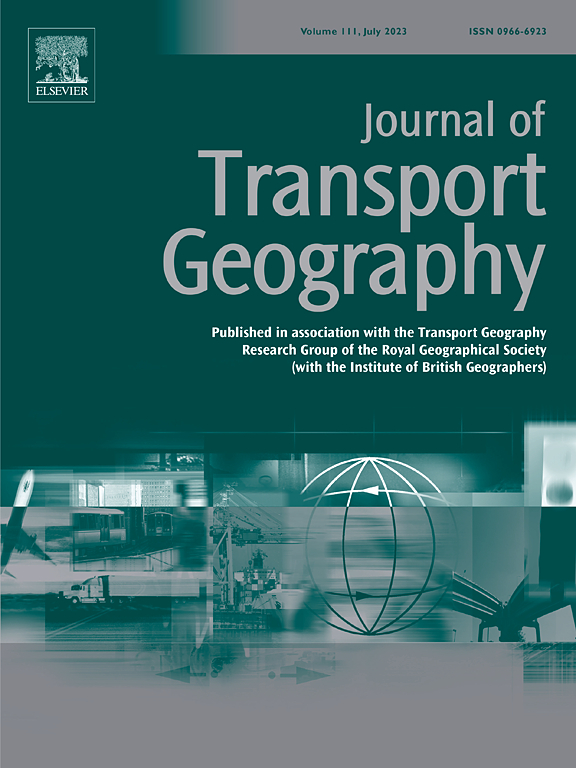Transport network changes and varying socioeconomic effects across China's Yangtze River Delta
IF 5.7
2区 工程技术
Q1 ECONOMICS
引用次数: 0
Abstract
Newly constructed transport infrastructure may have varying socioeconomic effects across cities and regions. This study employs a spatial equilibrium model to examine how the development of expressways and high-speed rails (HSRs) may induce changes in employed residents, housing rents, and consumer surplus within China's Yangtze River Delta region. Empirical findings indicate limited effects of transport infrastructure in reducing disparities, when juxtaposed with the substantial and sometimes conflicting impacts of urban development (i.e., job and housing increments) at the regional level. A more detailed spatial analysis suggests that the positive effects towards even development from transport accessibility improvements are more applicable to bridging intra-city-regional disparities. This highlights the necessity for integrated urban development and transportation planning policies to optimise equitable socioeconomic outcomes.
中国长江三角洲地区交通网络的变化及其对社会经济的不同影响
新建的交通基础设施可能会对不同城市和地区产生不同的社会经济影响。本研究采用空间均衡模型,考察了中国长江三角洲地区高速公路和高速铁路(高铁)的发展如何引起就业居民、住房租金和消费者剩余的变化。实证研究结果表明,交通基础设施在缩小差距方面的作用有限,而城市发展(即增加就业岗位和住房)在区域层面的影响巨大,有时甚至相互冲突。更详细的空间分析表明,改善交通可达性对均匀发展的积极影响更适用于弥合城市内部和区域之间的差距。这凸显了综合城市发展和交通规划政策的必要性,以优化公平的社会经济成果。
本文章由计算机程序翻译,如有差异,请以英文原文为准。
求助全文
约1分钟内获得全文
求助全文
来源期刊

Journal of Transport Geography
Multiple-
CiteScore
11.50
自引率
11.50%
发文量
197
期刊介绍:
A major resurgence has occurred in transport geography in the wake of political and policy changes, huge transport infrastructure projects and responses to urban traffic congestion. The Journal of Transport Geography provides a central focus for developments in this rapidly expanding sub-discipline.
 求助内容:
求助内容: 应助结果提醒方式:
应助结果提醒方式:


